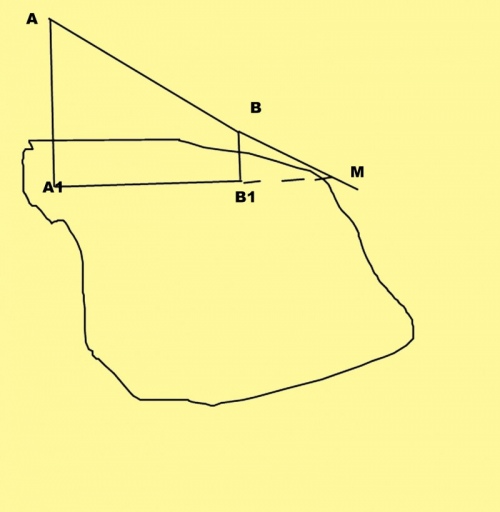You will need
- - plane;
- - video does not match the given plane;
- - gon;
- pencil.
Instruction
1
Imagine a plane on which to project direct. Label it, for example, on a sheet of paper. In any case, you get the image plane, so it will be rather conditional. You have to apply some spatial imagination to imagine how it will look in three-dimensional space.
2
Swipe a line that does not lie on this plane. Of course, you can build the projection of any line belonging to the plane, but it will be identical to the original line. If no additional parameters are specified, construct an arbitrary line. But in the conditions can be specified and the angle between your objects. It is formed at their point of intersection.

3
In order to build the most simple orthogonal (rectangular) projection, lower of any two points belonging to a given straight line, the perpendiculars to the plane. Connect them with a segment. This will be a rectangular projection of this line onto the plane. If the source video is a segment, then it is necessary to project its ends. For the beam is taken as the starting point and any other. For direct of arbitrary length it is best to first find the place of its intersection with the plane.
4
For better understanding, formed as a rectangular projection, do the following experiment. Hang on the wall a small screen. You can use just the white wall. You will need another piece of rope and 2 chairs or attached to the Desk stand as well as any light source. Tie a rope to the uprights. Place them so that the cord was stretched and at an angle to the screen. Measure the cord.
Place a table lamp so that its beam fall on the screen at the right angle. It needs to cover and the rope. Paying off the overhead light, you will see that the tense cord casts a shadow on the screen, and the length of the shadow does not coincide with the length of the cord. The shadow is the projection — in this case, rectangular. Experiment by placing the light source so that its beam fall on the screen at different angles.
Place a table lamp so that its beam fall on the screen at the right angle. It needs to cover and the rope. Paying off the overhead light, you will see that the tense cord casts a shadow on the screen, and the length of the shadow does not coincide with the length of the cord. The shadow is the projection — in this case, rectangular. Experiment by placing the light source so that its beam fall on the screen at different angles.
